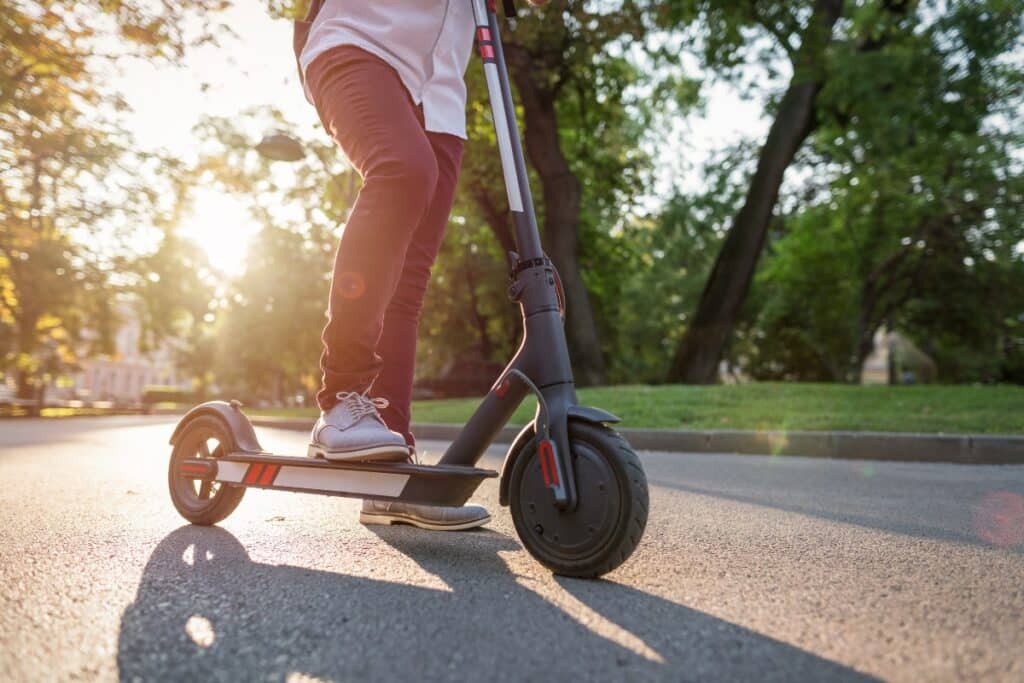This article is about new e-scooter legislation in NSW.
The NSW Government will legalise e-scooters on shared paths and roads for individuals over 16. This represents a significant development in urban transport.
While this shift offers potential benefits for mobility, it also brings into sharper focus a growing safety concern for strata communities: the escalating risk of lithium battery fires.
The government has acknowledged the inherent community safety considerations associated with this change and has outlined plans to establish safety standards and enhance rider education.
However, strata communities should be aware that these broad measures may not fully address the specific and potentially amplified fire risks within the often-confined environments of multi-dwelling buildings.
The data underscores the seriousness of this issue. NSW recorded a concerning 318 lithium battery fires in 2024 and with a significant increase in 2025 to date, a figure likely to rise with the increasing presence of e-scooters, alongside existing electric vehicles (EVs) and e-bikes, within strata schemes.
The fundamental characteristics of lithium-ion batteries mean:
- They pose a significant fire hazard if they are damaged, overcharged, improperly stored, or of poor manufacturing quality.
- These fires can be intense, challenging to extinguish, and release toxic fumes, presenting a direct and serious threat to life and property within strata complexes.
- The anticipated increase in e-scooter usage and storage within these buildings naturally elevates this risk, requiring proactive consideration from every strata community.
Urgent By-law Action Needed
In this evolving context, implementing well-considered and legally sound by-laws tailored to the management of EVs, e-bikes, and now e-scooters becomes increasingly important.
These by-laws can provide a framework for addressing key safety aspects, such as:
- Guidance on Safe Charging: Establishing clear guidelines and potentially exploring designated, safety-equipped charging areas for EVs and micromobility devices.
- Recommendations for Secure Storage: Implementing rules or providing guidance on the safe storage of these devices, potentially addressing storage in common areas and recommending adherence to safety standards within individual lots.
- Understanding Insurance Implications: Encouraging owners corporations to understand and mitigate the potential impact of device-related fires on the strata scheme’s insurance and clarify liability considerations.
- Developing Emergency Protocols: Creating and communicating clear emergency procedures for responding to battery fires, including evacuation plans and emergency service access.
- Promoting Resident Awareness: Establishing mechanisms for informing residents about the risks associated with lithium batteries and encouraging adherence to safety guidelines.
While the NSW Government’s efforts to improve general safety standards are a welcome development, the unique nature and higher density of strata living often necessitate a more specific and tailored approach at the community level.
A Proactive Approach to Safeguard Your Community
Strata Committees have a vital role in proactively considering the safety and well-being of their residents and protecting common assets. Engaging with legal professionals experienced in strata law can be invaluable in developing and implementing thoughtful by-laws that address these evolving risks. Prudent consideration of these matters now can help mitigate potential future hazards.
We encourage all strata committees, owners corporations, and strata managers to carefully assess this important issue and take proactive steps to ensure the safety and well-being of their communities in this era of increasing micromobility.
Adrian Mueller JS Mueller & Co Lawyers E: adrianmueller@muellers.com.au P: 02 9562 1266
This post appears in Strata News #744.
If you have a question or something to add to the article, please leave a comment below.
Disclaimer: The information contained in this article is provided for your personal information only. It is not meant to be legal or professional advice nor should it be used as a substitute for such advice. You should seek legal advice for your specific circumstances before relying on any information herein. Contact JS Mueller & Co for any required legal assistance.
JS Mueller & Co Lawyers has been servicing the strata industry across metropolitan and regional NSW for over 40 years. We are a specialist firm of strata lawyers with in depth and unmatched experience in, and comprehensive knowledge of strata law and levy collection.
Read next:
- NSW: E-bikes and E-Scooters – Can You Ban Them?
- NSW: E-Bike and E-Scooter Battery Fires in Strata on the Increase
- NAT: Strata building EV charging solutions: Key takeaways
This article has been republished with permission from the author and first appeared on the JS Mueller & Co Lawyers website.
Visit our Strata By-Laws and Legislation OR NSW Strata Legislation
Looking for strata information concerning your state? For state-specific strata information, take a look here.
Are you not sure about some of the strata terms used in this article? Take a look at our NSW Strata Glossary to help with your understanding.
After a free PDF of this article? Log into your existing LookUpStrata Account to download the printable file. Not a member? Simple – join for free on our Registration page.
